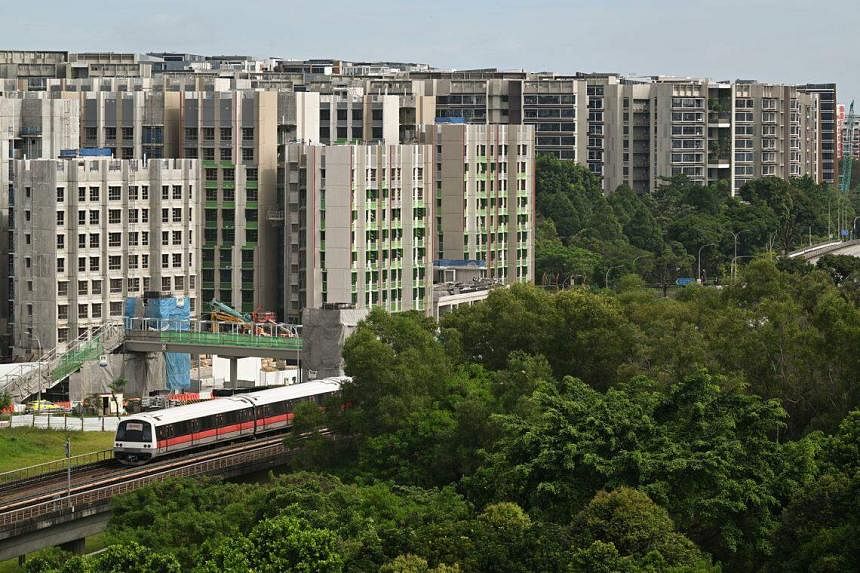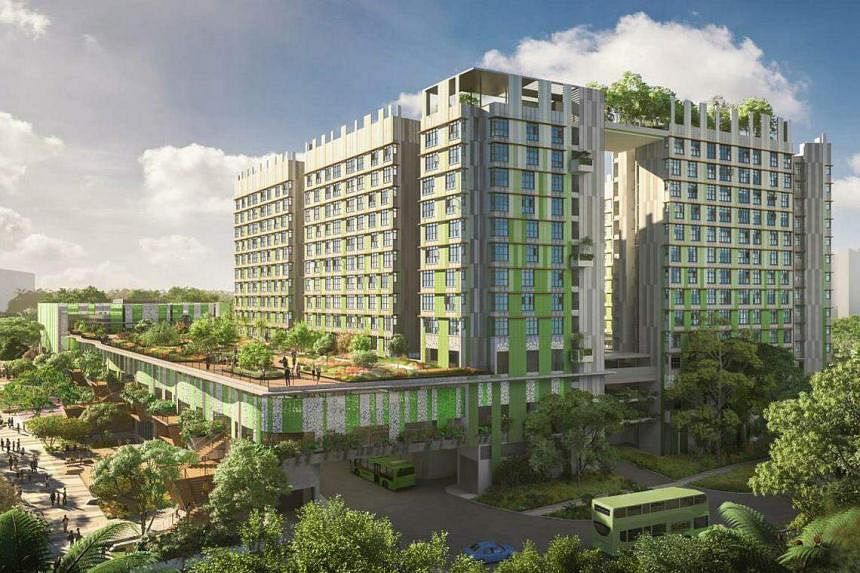SINGAPORE - Parliament scrutinised the budgets of the ministries of Sustainability and the Environment, and National Development on Thursday. Here are some of the key announcements.
1. More help for first-time BTO applicants

Married couples aged 40 and below applying for their first Build-To-Order (BTO) flat will get an additional ballot, along with families with Singaporean children aged 18 and under. More flats will also be set aside for this group. To reduce the drop-out rate among BTO flat applicants, those who do not select a flat when invited by the Housing Board to do so will be considered second-timers for one year. These measures will kick in from the August launch.
Why it matters
While 95 per cent of four-room and larger BTO flats are already set aside for first-timers, Singaporeans have called for more help for those who are already married or have children to own their first home, given the tight housing market. The stricter rules for those who forgo booking a flat when invited sends a signal to home buyers to apply only when they really intend to buy, and to not crowd out others.
2. Ramping up flat supply

Close to 100,000 private and public homes are expected to be completed between 2023 and 2025, with almost 40,000 homes to be completed in 2023 – the highest number in the last five years. About 23,000 BTO flats will be launched in 2023 to meet strong demand, similar to 2022. By 2025, HDB will oversee 150 concurrent projects islandwide, compared with almost 100 today.
Why it matters
The Covid-19 pandemic disrupted construction, which caused projects to be delayed, prompting buyers to enter the resale market and yet others to join the queue for BTO flats. The result was rising HDB resale prices through the pandemic years. By building aggressively, HDB wants to solve the current supply crunch and meet the higher demand for flats, even as it launches more shorter-waiting-time flats from 2024.
3. 5 cents for a plastic bag

Plastic bags will no longer be free at most supermarkets from July 3. Shoppers will have to pay at least five cents for each disposable shopping bag at about 400 outlets under major chains such as FairPrice, Cold Storage, Giant, Sheng Siong and Prime Supermarket. This will apply to all types of disposable bags, including plastic, paper and biodegradable ones.
Why it matters
Singapore has for years resisted introducing a mandatory charge for plastic bags, which many people use to bag rubbish at home. This was seen as beneficial to public hygiene, yet excessive use of disposables can add to carbon emissions. The move to impose a mandatory charge aims to nudge people towards using reusable bags instead. Similar schemes in Hong Kong, Taiwan and the United Kingdom have led to a 60 per cent to 90 per cent drop in plastic bags used.
READ MORE HERE: Most supermarkets in Singapore will charge 5 cents for each plastic bag from July 3
4. New hawker centres

Two new hawker centres are due to open in Bidadari and Buangkok in 2023. Each will house around 40 cooked food stalls and accommodate over 700 diners. In 2022, four new hawker centres opened in Senja, Bukit Canberra, Fernvale and Punggol. Another 25 existing hawker centres in Holland Village and North Bridge Road, among other locations, will also be upgraded in 2023.
Why it matters
With Singaporeans increasingly concerned about the higher cost of living and inflation, hawker centres are an important source of affordable food for many, especially those on a tight budget. In picking sites for hawker centres, heartland areas without affordable dining options will be prioritised. This is to serve residents and ensure that hawkers can operate viably without fierce competition from other food and beverage establishments.
READ MORE HERE: 2 new hawker centres to open in Bidadari and Buangkok this year
If you have a few more minutes…
1. Growing more food
Land for planting fruiting vegetables and mushrooms will be up for tender in the second half of 2023, as Singapore continues in its quest for self-sufficiency in food. Lim Chu Kang will also be developed into a high-tech agri-food zone, with the authorities looking at locating fish hatcheries and other key facilities there to support land- and sea-based fish farms in the area.
2. First Mount Pleasant BTO project in 2025
The first BTO project at the Old Police Academy in Mount Pleasant will be launched in 2025, seven years after studies and engagements for the site began in 2018. National Development Minister Desmond Lee cited the site to illustrate how land preparation for brownfield sites is a long and complex process that also considers an area’s ecological and heritage significance.
3. More restoration
The National Parks Board (NParks) is looking to restore some 80ha of forest, coastal and marine habitats by 2030, after meeting its previous target ahead of time. The plan was to hit 30ha by 2030, but this has already been achieved through restoration in parks such as Rifle Range Nature Park, Sungei Buloh Wetland Reserve and Kranji Coastal Nature Park. NParks will meet its revised target through establishing riverine and rainforest habitats at Jurong Lake Gardens, and restoring mangrove habitats at the Sungei Durian Pond on Pulau Ubin.
4. New energy requirement for buildings
A new Mandatory Energy Improvement Regime will be introduced by the end of 2024 to improve the energy performance of buildings. Owners of buildings that consume a lot of energy will have to conduct an audit and implement energy-saving measures, such as replacing faulty parts and sensors, and using more efficient lighting. The regime will apply to the most energy-intensive commercial buildings, healthcare facilities, sports and recreation centres, and institutional buildings with a gross floor area of 5,000 sq m and above.
